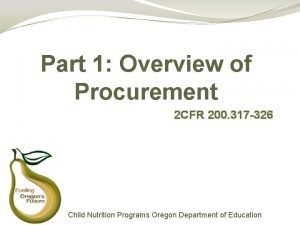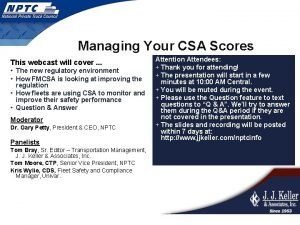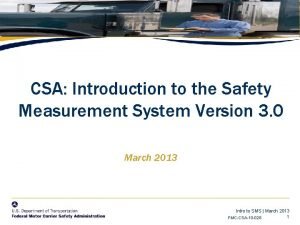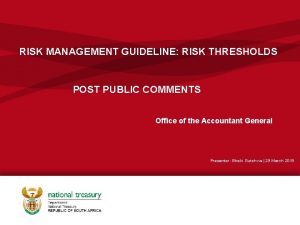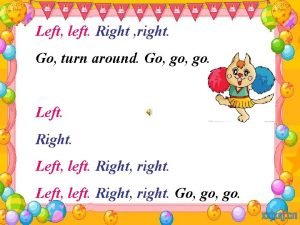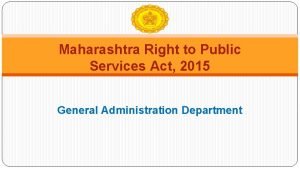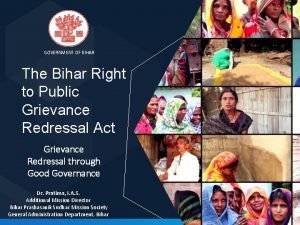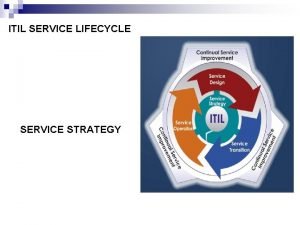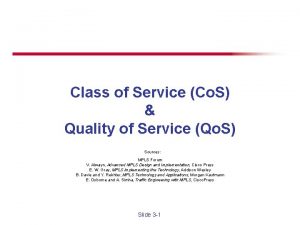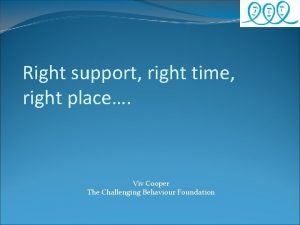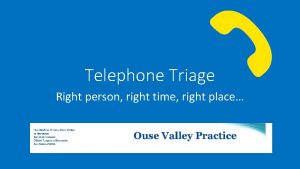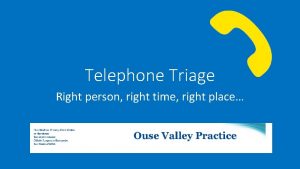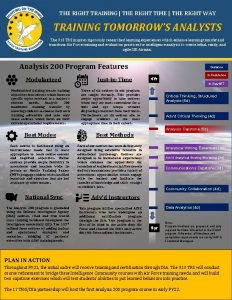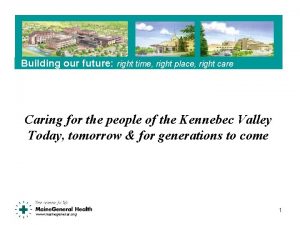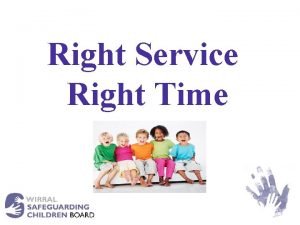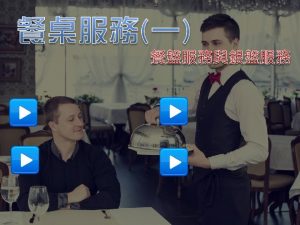Thresholds Conference Right Service Right Time What are





















- Slides: 21

Thresholds Conference `Right Service Right Time`

What are Thresholds? • A common language and understanding of children’s needs across all agencies • Empowers agencies to make the right decision for children and their families. • Enables agencies to be able to evidence improvement or deterioration with a family • Supports staff in making a high quality assessments of a family and highlights the positives within a family as well as any concerns. `Right Service Right Time`

Wirral’s Continuum of Need `Right Service Right Time`

`Right Service Right Time`

Escalation Process (Managing professional disagreement) • On WSCB website (http: //wirrallscb. proceduresonline. com/chapters/p_esc_ch_soc. html) • To be used when there is a difference of professional opinion • This can be between all different agencies (not just social care) • Escalation paperwork must be completed • Escalation pathway and timescales must be followed `Right Service Right Time`

Tools to support Assessments • Supports staff with making high quality assessments. • Provides staff with a bench mark to be able to evidence improvement or deterioration in the future. • Provides staff with assurance that the family receive the right service at the right time. • All staff working with children and their parents across Wirral should use the relevant tools to identify need. `Right Service Right Time`

WSCB Website • www. wirralsafeguarding. co. uk is the safeguarding board website • Includes dedicated linked pages for the thresholds and tools for professionals to use • Website also contains links to all the training which will include briefings for use of the tools `Right Service Right Time`

Graded Care Profile When would you use it? • “I feel this family is struggling to meet the needs of their children and I have concerns in a number of different areas. ” What is it? • Tool can be used by all professionals during assessment, intervention or pre-referral to other agencies including Children and Young People’s services. • It includes strengths and weaknesses and facilitates targeted interventions. • It is a detailed tool that grades a range of statements that may indicate the presence of neglect against a standardised framework. • focuses on specific facets of neglect that concern professionals. • The indicators include – physical care (e. g. nutrition), – safety (e. g. traffic and suitability of carers); – responsiveness to the child (e. g. sensitivity and communication); esteem (e. g. stimulations and acceptance). `Right Service Right Time`

`Right Service Right Time`

Home Conditions Assessment When would you use it? “The home conditions are poor and I am concerned that this is having a negative effect on the children. ” What is it? • The home conditions assessment tool is a short assessment of the physical aspects of the home conditions and the impact this can have on the children who live there. • These impacts will differ depending on the age and development of the child. • Particular home conditions may prompt actions (e. g. clearing of rubbish in the home by the parents) which can inform plans. • The home conditions form can be completed in partnership with parents/carers, • The tool concludes with decisions, tasks, actions and consent issues. • Subsequent reviews should establish whether the home conditions have improved or deteriorated. `Right Service Right Time`

Brook: sexual behaviours traffic light tool When would you use it? “I am concerned about a child displaying sexual behaviors that are inappropriate or potentially harmful and therefore in need of assessment. ” What is it? • This innovative resource helps professionals who work with children and young people to identify, assess and respond appropriately to sexual behaviours. It uses a 'traffic light tool' to categorise sexual behaviours, to increase understanding of healthy sexual development and distinguish this from harmful behaviour. • By identifying sexual behaviours as green, amber or red, professionals across different agencies can work to the same criteria when making decisions and protect children and young people with a unified approach. • This resource has been designed to help professionals think through their decisions and does not replace organisational procedures or assessment frameworks. `Right Service Right Time`

Child Sexual Exploitation (CSE) screening tool When would you use it? • “I feel this child may be at risk of sexual exploitation as there a number of indicators worrying me having read the CSE practitioner guide”. What is it? • Where child sexual exploitation, or the risk of it, is suspected, frontline practitioners should complete the Merseyside CSE Screening Tool • All medium and high risk completed screening tools must be sent to the integrated front door with a request for services form attached. • Where threat is immediate it may be appropriate to inform Merseyside Police on telephone number 101 or if necessary through the emergency number 999. `Right Service Right Time`

`Right Service Right Time`

Team Around the Family (TAF) When would you use it? • “I am concerned that a child/young person or family needs some additional coordinated support. ” What is it? • The Team around the Family (TAF) is our approach to conducting an assessment of a family's additional needs (including the needs of the children) and deciding how those needs should be met. It should be used by practitioners across children's services in Wirral. • • The TAF will promote more effective, earlier identification of additional needs, particularly in universal services, but also across the continuum of need. It is intended to provide a simple process for an assessment of a family's needs and strengths, taking account of the role of parents, carers and environmental factors on children's development. Practitioners will then be better placed to agree, with the child and family, about what support is appropriate. • The TAF will also help to improve integrated working by promoting coordinated service provision and ensure better information sharing. `Right Service Right Time`

Wirral’s Domestic Abuse Pathway `Right Service Right Time`

Risk Indicator Checklist (RIC or DASH) When would you use it? • • “A woman seems to be being stalked by her ex-partner. It appears he has been harassing her and there are domestic abuse concerns – does he pose a risk to her? ” There is evidence of potential domestic abuse within a household, is it significant? What is it? • • • The purpose of the Dash risk checklist is to give a consistent and simple tool for practitioners who work with adult victims of domestic abuse in order to help them identify those who are at high risk of harm and whose cases should be referred to a Multi -Agency Risk Assessment Conference (MARAC) meeting in order to manage their risk. The score provides evidence required to refer to Family Safety Unit. Whilst domestic abuse is most often perpetrated by men towards women in an intimate relationship such as boyfriend/girlfriend, husband/wife, this checklist can also be used for lesbian, gay, bisexual relationships and for situations of ‘honour’-based violence or family violence. If you are concerned about risk to a child or children, following the completion of a DASH you should make a referral to ensure that a full assessment of their safety and welfare is made. `Right Service Right Time`

RIC/DASH • To help front line practitioners identify high risk cases of domestic abuse, stalking and ‘honour’-based violence. • To decide which cases should be referred to MARAC and what other support might be required. A completed form becomes an active record that can be referred to in future for case management. • To offer a common tool to agencies that are part of the MARAC process and provide a shared understanding of risk in relation to domestic abuse, stalking and ‘honour’-based violence. `Right Service Right Time`

Barnardo’s Domestic Violence Risk Identification Matrix (DV RIM) Assessing the risks to children from male to female domestic violence • The tool enables practitioners to assess the level of risks to children from male and female domestic abuse. The sheet contains a list of risk factors, vulnerabilities and protective factors which helps practitioners recognise whether a child is at moderate, serious or severe risk. `Right Service Right Time`

`Right Service Right Time`

Exercise On your table are a couple of folders, each one containing a case study and one of the tools for professionals to use. Every table has a copy of the Graded Care Profile and Home Conditions for Neglect Tables will also have the Brook Screening Tool for Sexual Behaviour or the CSE Screening Tool or the tools for assessing Domestic Abuse `Right Service Right Time`

Exercise On your tables in small groups have a go at completing one or two of the tools using the case studies provided Which of the tools would have been helpful in assessing the level of need in the cases described earlier? Members of the thresholds steering group are available to help you and answer questions We will take feedback/ observations at the end of the session `Right Service Right Time`
 Mikael ferm
Mikael ferm Right product right place right time right price
Right product right place right time right price Right time right place right quantity right quality
Right time right place right quantity right quality The right man on the right place at the right time
The right man on the right place at the right time 2 cfr 200 procurement thresholds
2 cfr 200 procurement thresholds How to dispute csa points
How to dispute csa points Five thresholds
Five thresholds Csa basic thresholds
Csa basic thresholds Establishing risk thresholds
Establishing risk thresholds For minutes. start.
For minutes. start. Time management conference
Time management conference Left left right right go go go
Left left right right go go go Put your right foot in
Put your right foot in Left left right right go go go
Left left right right go go go Maharashtra right to public service act
Maharashtra right to public service act Bihar right to public service
Bihar right to public service Itil service lifecycle model
Itil service lifecycle model Itil five stages
Itil five stages Itil service lifecycle continual service improvement
Itil service lifecycle continual service improvement Transitory service intensifiers
Transitory service intensifiers Soa architecture
Soa architecture Class of service vs quality of service
Class of service vs quality of service




